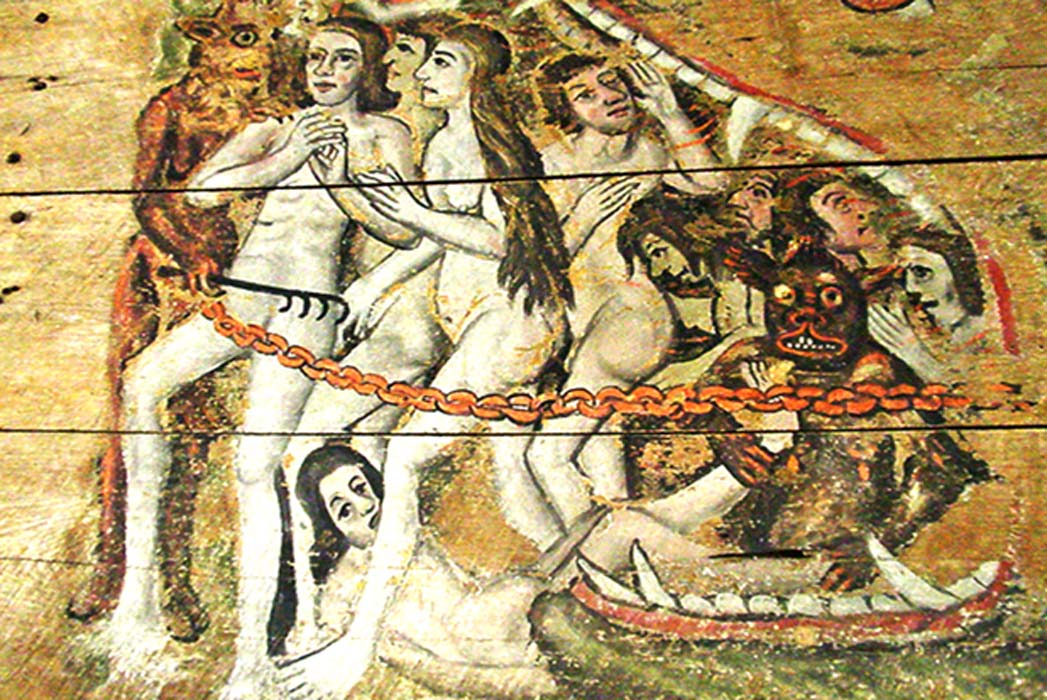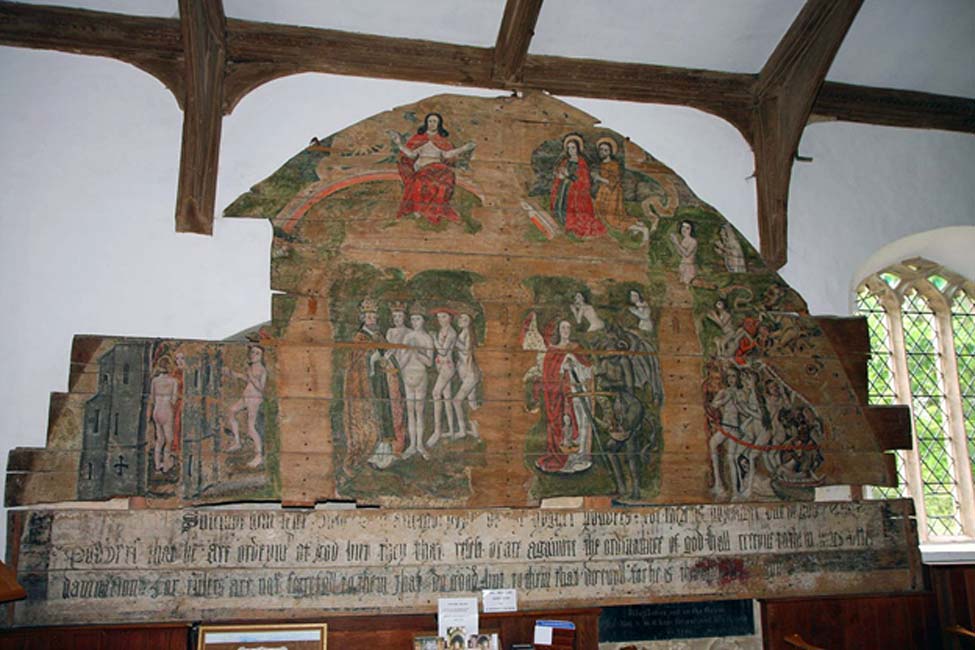
The Wenhaston Doom: A Surprising Medieval Relic, Doomsday Message—and a Reminder of Pre-Christian Traditions
A ‘Doom’ is a remarkable survival of a type of church decoration once common in the Middle Ages but largely destroyed during the iconoclastic excesses of the English Protestant Reformation during the reign of Edward VI (1547-1553) in the mid-16th century. I recently visited St Peter’s church in the tiny Suffolk (UK) village of Wenhaston (pronounced Wennerston). I was actually there to see an art exhibition however I also took the opportunity to take a closer look at the Wenhaston Doom.

The Wenhaston Doom (CC BY 2.0)
Doomsday Message
The painting depicts the Day of Judgement (or Doomsday), hence the generic name of ‘Dooms’ for these paintings, in a relatively simplistic style that could be easily understood by a largely illiterate congregation. Typically, they were located in a prominent position, such as on the chancel arch – so they would be visible to the entire congregation throughout the church service, or on the west wall at the back of the church – so they would be visible as the worshippers filed outside at the end of the service.





